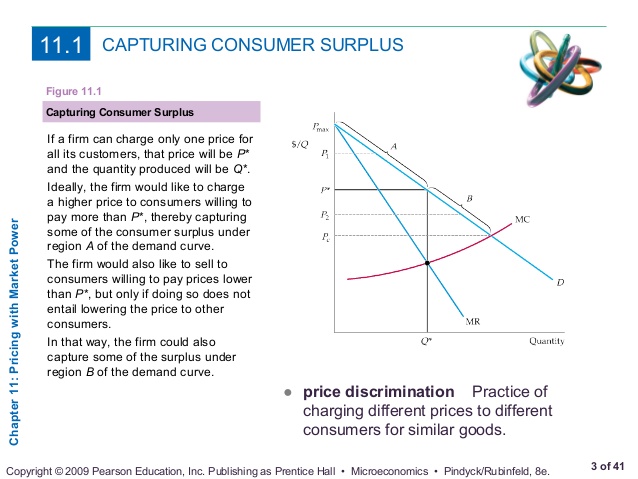Uber has already brought about a revolution in way taxi rides are priced. Before it had been founded, taxi rides cost a simple multiple of the distance travelled; Uber sought to upend this system by bringing about demand and supply into the equation. Uber started charging surge prices in areas where taxis were scarce, and dropped prices when they were more plentiful. But now, the company is looking to extend its differential pricing in a radical new way.

Uber has said it’s testing out a new fare system in certain cities called “route-based pricing”, which charges customers based on what Uber predicts they’re willing to pay. It does it through the vast array of data it has at its disposal — someone traveling from a wealthy neighborhood to another prime spot, for instance, might be asked to pay more than another person heading to a poorer part of town, even if demand, traffic and distance are the same.
This sounds completely revolutionary, but what Uber’s trying to do here is basic economics. When Uber charges a fare for a ride, say Rs. 50, it isn’t always charging customers at the limit they’re willing to pay. A fat-cat investment banker might have happily paid Rs. 80 for the same ride, while a struggling journalist wouldn’t have taken the ride for any more than Rs. 50. By charging them both Rs. 50, Uber loses the additional Rs. 30 it could’ve got from the investment banker. However, if it charges different people based on their ability to pay, it can end up making more money. In Economics terms, it’s called capturing the consumer surplus.

And Uber certainly has the data to determine how much its riders can pay. While Daniel Graf, Uber’s head of product, has only confirmed the example of “rich” routes versus “poor” routes, Uber knows a whole lot more about its users than just that. Based on ride data, Uber can easily determine where its users live and work — it’s likely that someone living in Koramangla, for instance, makes more money than someone living on the outskirts of Bangalore, and someone who takes rides to Goldman Sachs every day likely makes more money than someone who takes daily rides to Dainik Jagran. Uber also knows what its users do on weekends — someone taking rides to five star hotels can conceivably be willing to pay more than someone who frequents college bars.
Uber’s bold plan could completely change how taxi rides are priced in the future, and would tie neatly with the ambitions of its Ayn Rand-loving, libertarian CEO Travis Kalanick. Uber has long claimed to essentially be a data play — back in 2011, when the company had just started, it had a Math division where Statistics PhDs worked out how Uber would determine its surge prices, and how it would place cabs across cities. With access to more ride data than ever before — Uber completes over 2 million trips a day worldwide — and access to the ride history of its passengers, it’s better positioned than anyone else to implement its differential pricing strategy.
Apart from the funky mathematics, Uber’s strategy could help the company in practical ways — Uber incurred losses of $3 billion in 2016, and being able to charge its well off customers more could radically help its bottom line.
Challenges, of course, will remain. Uber’s seen resistance to even to its surge pricing methods , particularly in India, where several states have banned its implementation. Even in areas where surge pricing is now the norm, different prices based on whether the person booking the ride is rich or poor might be a little too much for consumers to stomach. There might also be other challenges — if drivers realize they earn lower fares on poor routes, they might start avoiding these areas, which could end up making Uber look pretty discriminatory.
But Uber’s rethinking the whole cab riding industry in a way that few could’ve imagined back in 2009; if using complicated math to determine ride fares wasn’t disruptive enough, it now wants to go a step further and use people’s backgrounds to determine how much they’d be willing to pay. It’s too early to say if these experiments will work out, but one thing’s for certain — it’s hard to think of a startup that’s so radically altered its industry in a few short years.